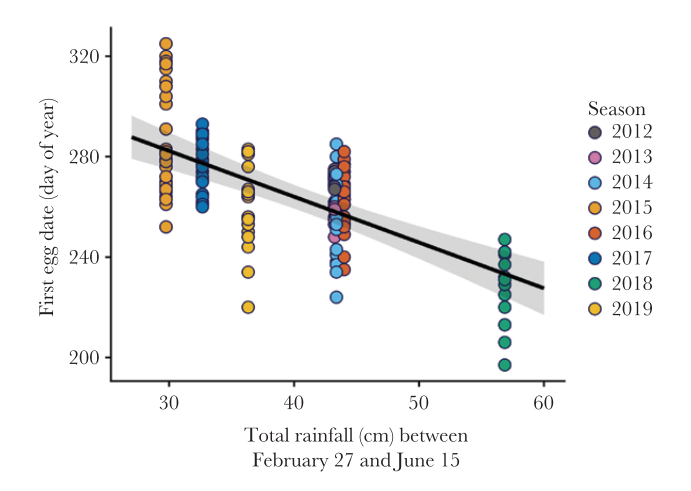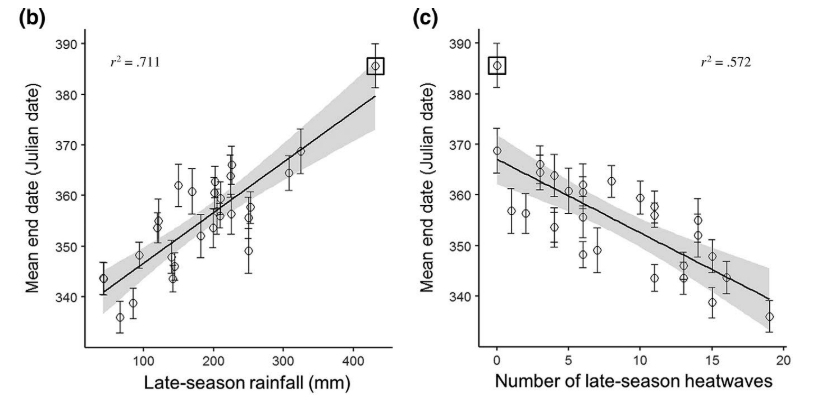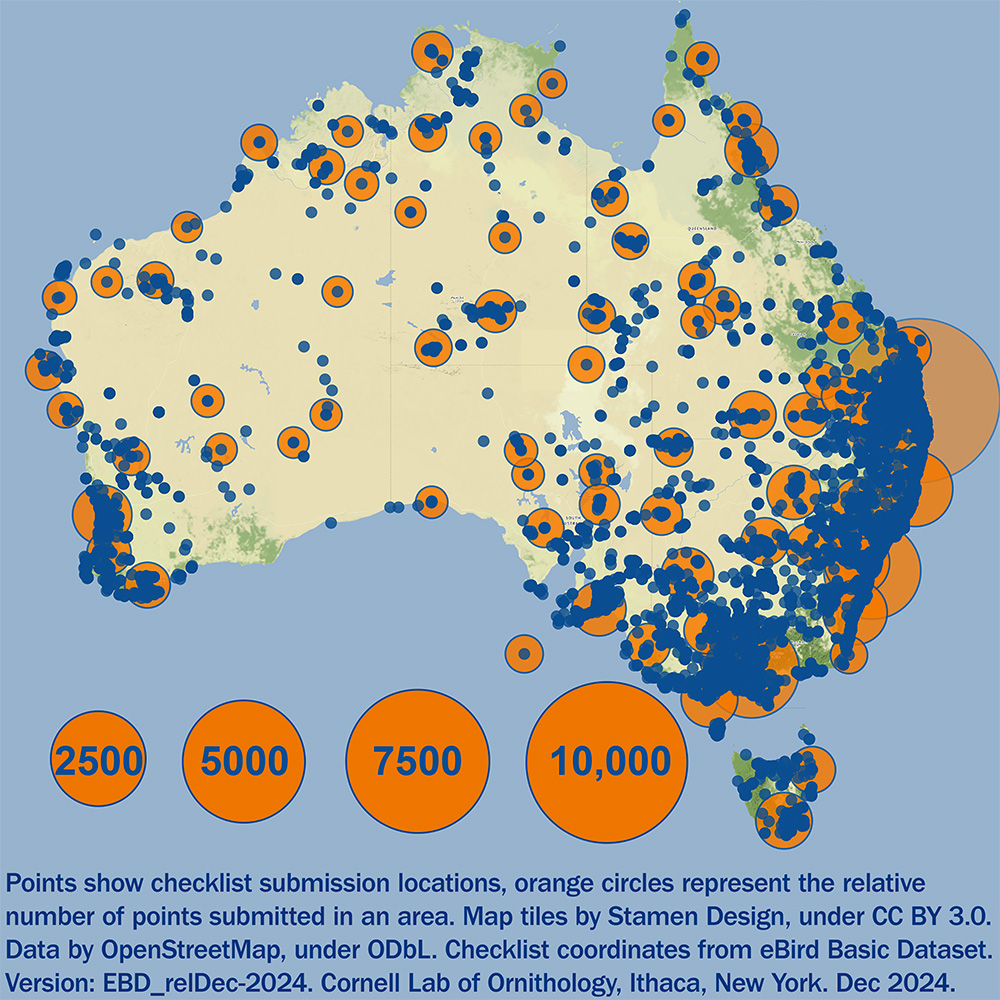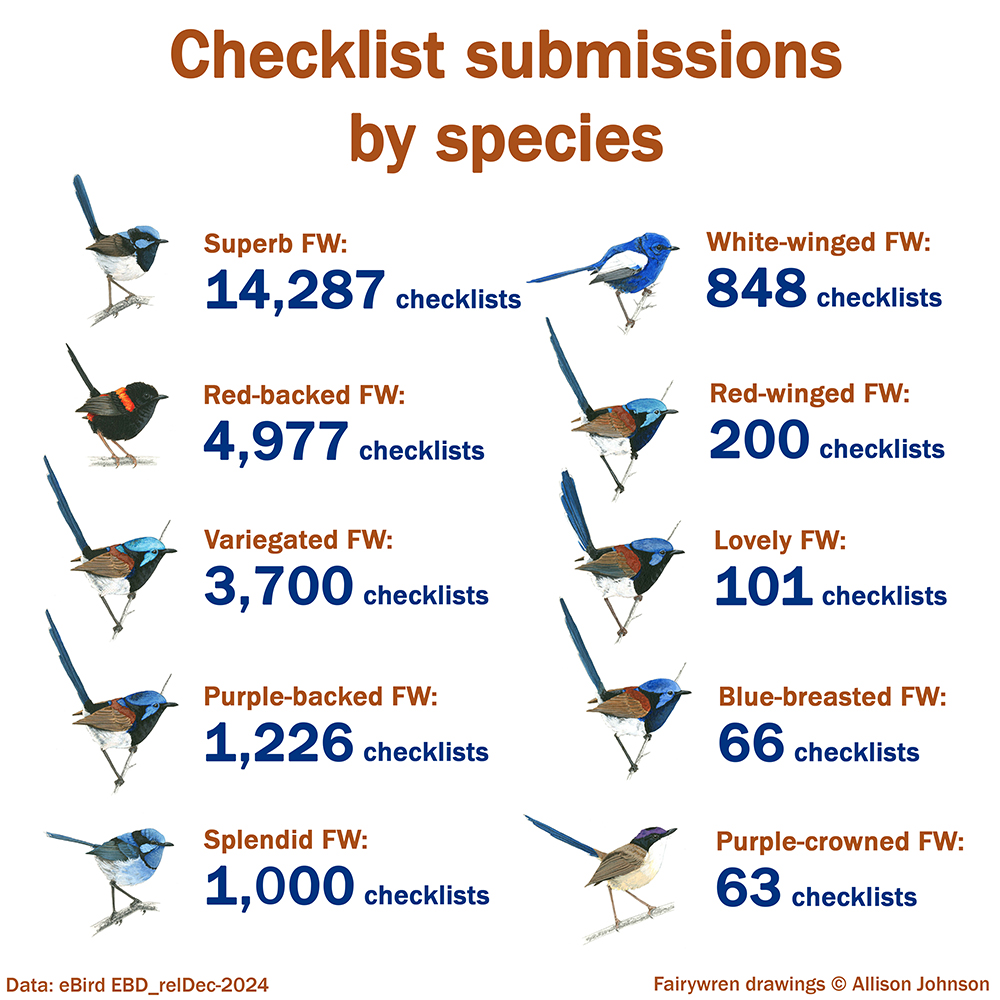Hi all,
We’re back with another update!
The fairywren breeding seasons are likely coming to an end around much of the country, if they haven’t already. Have you seen any juveniles around lately? Look for brown, female-like fairywrens with short tails and yellow gapes at the corners of their mouths. They’ll likely be following an adult!
Here's a great photo of a juvenile Superb Fairywren from Paul Brooks on eBird:
https://macaulaylibrary.org/
For birds, the breeding season begins when there are enough resources to feed young or when there is the promise of enough resources coming to feed young. For example, in Red-backed Fairywrens outside of Brisbane, years with more rainfall between the end of February and the beginning of June led to earlier breeding (see figure below), likely because increased rainfall results in vegetation growth, and increased vegetation growth results in increased insect abundance – food for fairywrens. Breeding fairywrens rely on that increased food to feed their offspring and ensure their best chances at survival.

Figure 5 from Welklin et al., 2023 showing the relationship between rainfall during the non-breeding season and first egg dates across years. Different colors refer to different years. Each point represents the first egg date of a Red-backed Fairywren nest near Brisbane.
But if rainfall and more food are what initiates the start of breeding, what forces determine when breeding ends?
A paper published in 2020 on Superb Fairywrens helps answer this question. Lei Lv and coauthors investigated the environmental factors associated with when Superb Fairywrens begin and cease breeding, finding that rainfall and heat waves are major factors determining when the breeding season ends. Specifically, less rainfall between October and January and more heatwaves (days over 29 degrees C) in late November through December led to earlier end dates. Note their study was conducted in Canberra.

Figure 2 from Lv et al., 2020. b) shows the relationship between late season rainfall (October 13–January 17) and breeding end dates. c) shows the relationship between the number of late season heatwaves (days > 29°C from November 24 – December 23) and breeding end dates in Superb Fairywrens in Canberra.
Despite these findings, their data show that breeding end dates can be extremely variable among females.

Figure 1 from Lv et al., 2020 showing the distribution laying dates of the last clutch in Superb Fairywrens. Julian date refers to day of year - day 365 is December 31st.
Are you still seeing breeding fairywrens? Enjoy them while you can! Many of the males will likely be moulting out of their breeding plumage soon now that breeding is finishing up.
Citations:
Welklin, J. F., Lantz, S. M., Khalil, S., Moody, N. M., Karubian, J., & Webster, M. S. (2023). Photoperiod and rainfall are associated with seasonal shifts in social structure in a songbird. Behavioral Ecology, 34(1), 136-149. LINK
Lv, L., Liu, Y., Osmond, H. L., Cockburn, A., & Kruuk, L. E. (2020). When to start and when to stop: Effects of climate on breeding in a multi‐brooded songbird. Global Change Biology, 26(2), 443-457. LINK
Having trouble accessing a paper? Let us know and we can send you a pdf. Email us at fairywrenproject@gmail.com.



